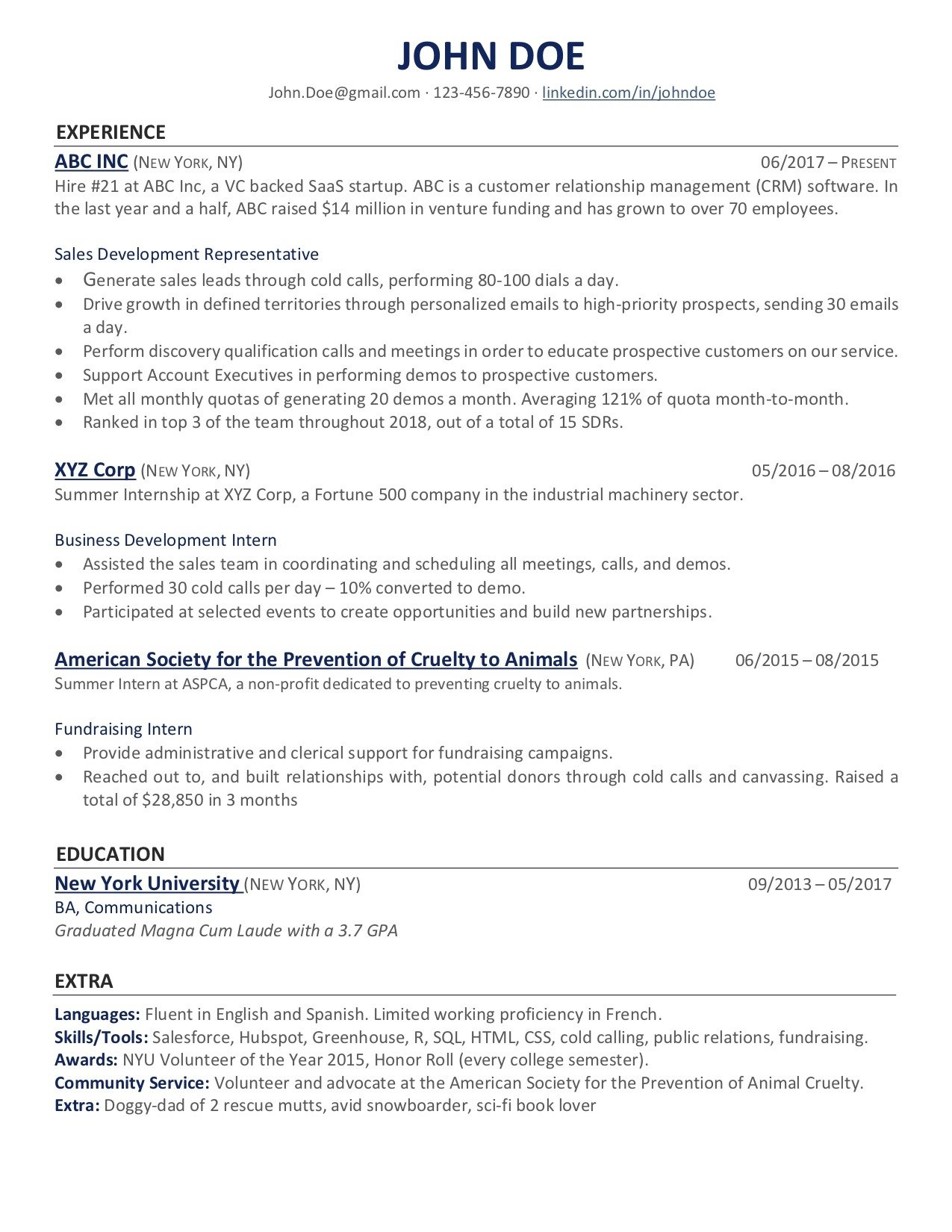8 Tips to Craft a Resume that Will Stand Out in the Job Search
A typical recruiter will spend an average of six seconds looking at your resume before deciding to move you to the next stage of a job application or send your resume to the reject pile. Sometimes it’s not even a recruiter that’s looking at your resume – applicant tracking system (ATS) screen resumes based on keywords or phrases. It can be tough to make your resume stand out to a recruiter or an ATS, but there are specific things you can do to make sure your resume has the best chance to move through the screening process. Here are eight best practices that will give your resume a competitive edge in the recruitment process.
Make your resume design simple and easy to read.
If your resume is difficult to read, recruiters won’t spend time on it no matter how good your experience is. To make sure that your resume isn’t tossed aside, keep your resume design clean and simple. Unless you’re applying for a design or communications role, you don’t need to incorporate color or a unique design. A recruiter will skim your resume, so you want it to be easy for them to pick out your previous experiences and job titles. Create headers for your work, experience, skills and/or interests section and utilize bold fonts and sizing to make the contents of each section stand out.
List your experience before education.
Education is important, but data shows that recruiters value your experience over your university and GPA. To make sure your experience stands out right away, place your experience section above your education section. Your education section doesn’t need to take up a lot of space on your resume – you only need to include your university, major, graduating year, and your GPA if it’s above a 3.5 (3.0 for STEM majors).
Don’t just list your job responsibilities – quantify your successes in that role.
In the “experience” section of your resume, you have the chance to provide context for each previous role you have held. To help your resume stand out to the recruiter viewing it, don’t just outline the duties of your role, but instead outline the impact you had in the role. Additionally, make sure you’re listing your experiences in reverse chronological order, starting with your most recent experience first.
Only include relevant experience on your resume – and keep your resume to one page.
You should have one master resume that contains all of your experience and academic information, but you should personalize your resume depending on the role you’re applying for. Recruiters often use applicant tracking systems (ATS) which scan for keywords found in your experience or skills. To keep your resume from being rejected by an ATS, be sure to include keywords that are used in the job description you’re applying for, and only include relevant experiences. Customizing your resume for the job application will also help you keep your resume to one page, the standard length for a resume.
Include your name, phone number, email, and any relevant portfolio links – but leave off your address.
It’s helpful to include your preferred contact methods – that should include your phone number and email address. Unless you’re applying for a local position, you can leave your address off your resume. If you’re a software engineer or design-focused candidate, you can also include a link to an online portfolio or Github.
You don’t typically need to include an objective statement or the phrase “references available upon request.”
These two statements are obvious, and will only take up space on your resume. The only reason to include an objective statement on your resume is if you’re applying for a job that has little relation to your previous experience – you may want to give the recruiter some context on why you’re changing career paths.
If you have room, share some interesting hobbies.
Depending on how much space you have on your resume, you might want to include some of your hobbies or interests to give the recruiter or hiring manager a sense of your personality. That being said, make sure those hobbies are somewhat related to the job you’re applying for. A hobby that shows off your competitive nature is great if you’re applying for a sales role. But watching Netflix might be hard to relate to a specific position, unless you’re trying to get into the entertainment industry.
Always send or upload your resume as a PDF.
An easy tip that’s easy to forget – always export your resume as a PDF. While most computers can open a Word or Pages document, the added inconvenience of an unpackaged document can rub some recruiters the wrong way. To make it easier to receive and view your resume, save it as a PDF before sending it out.
Crafting the perfect resume doesn’t have to be have to difficult. Still need some guidance? Check out our example resume below, which applies our top tips:

Are you a student looking for awesome entry-level jobs and internships? Sign up for a RippleMatch account here and get matched with exciting opportunities from top companies.





